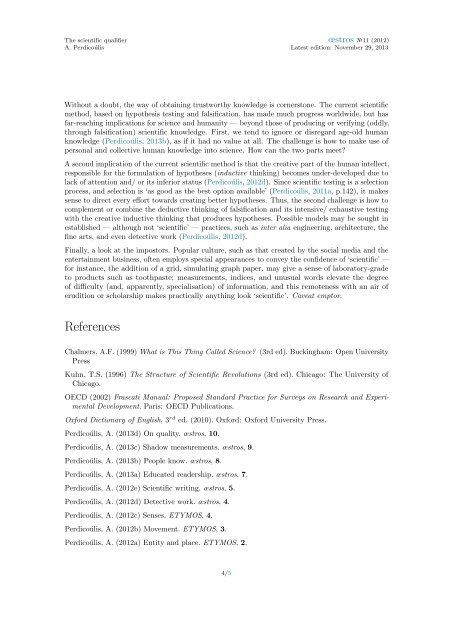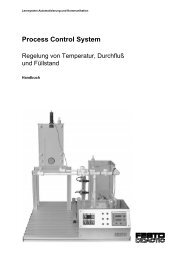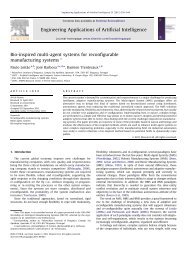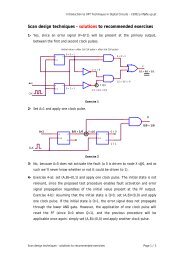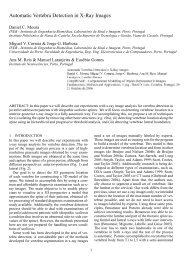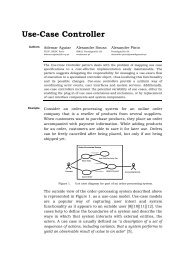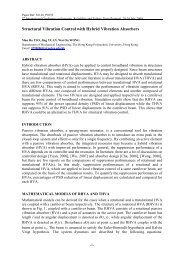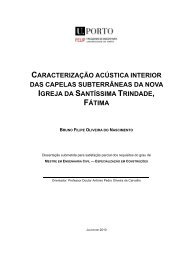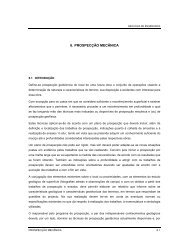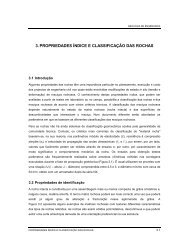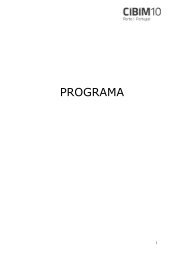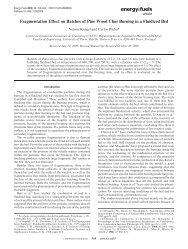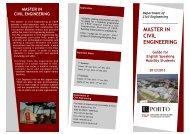The scientific qualifier
The scientific qualifier
The scientific qualifier
Create successful ePaper yourself
Turn your PDF publications into a flip-book with our unique Google optimized e-Paper software.
<strong>The</strong> <strong>scientific</strong> <strong>qualifier</strong><br />
A. Perdicoúlis<br />
œstros №11 (2012)<br />
Latest edition: November 29, 2013<br />
Without a doubt, the way of obtaining trustworthy knowledge is cornerstone. <strong>The</strong> current <strong>scientific</strong><br />
method, based on hypothesis testing and falsification, has made much progress worldwide, but has<br />
far-reaching implications for science and humanity — beyond those of producing or verifying (oddly,<br />
through falsification) <strong>scientific</strong> knowledge. First, we tend to ignore or disregard age-old human<br />
knowledge (Perdicoúlis, 2013b), as if it had no value at all. <strong>The</strong> challenge is how to make use of<br />
personal and collective human knowledge into science. How can the two parts meet?<br />
A second implication of the current <strong>scientific</strong> method is that the creative part of the human intellect,<br />
responsible for the formulation of hypotheses (inductive thinking) becomes under-developed due to<br />
lack of attention and/ or its inferior status (Perdicoúlis, 2012d). Since <strong>scientific</strong> testing is a selection<br />
process, and selection is ‘as good as the best option available’ (Perdicoúlis, 2011a, p.142), it makes<br />
sense to direct every effort towards creating better hypotheses. Thus, the second challenge is how to<br />
complement or combine the deductive thinking of falsification and its intensive/ exhaustive testing<br />
with the creative inductive thinking that produces hypotheses. Possible models may be sought in<br />
established — although not ‘<strong>scientific</strong>’ — practices, such as inter alia engineering, architecture, the<br />
fine arts, and even detective work (Perdicoúlis, 2012d).<br />
Finally, a look at the impostors. Popular culture, such as that created by the social media and the<br />
entertainment business, often employs special appearances to convey the confidence of ‘<strong>scientific</strong>’ —<br />
for instance, the addition of a grid, simulating graph paper, may give a sense of laboratory-grade<br />
to products such as toothpaste; measurements, indices, and unusual words elevate the degree<br />
of difficulty (and, apparently, specialisation) of information, and this remoteness with an air of<br />
erudition or scholarship makes practically anything look ‘<strong>scientific</strong>’. Caveat emptor.<br />
References<br />
Chalmers, A.F. (1999) What is This Thing Called Science? (3rd ed). Buckingham: Open University<br />
Press<br />
Kuhn, T.S. (1996) <strong>The</strong> Structure of Scientific Revolutions (3rd ed). Chicago: <strong>The</strong> University of<br />
Chicago.<br />
OECD (2002) Frascati Manual: Proposed Standard Practice for Surveys on Research and Experimental<br />
Development. Paris: OECD Publications.<br />
Oxford Dictionary of English, 3 rd ed. (2010). Oxford: Oxford University Press.<br />
Perdicoúlis, A. (2013d) On quality. œstros, 10.<br />
Perdicoúlis, A. (2013c) Shadow measurements. œstros, 9.<br />
Perdicoúlis, A. (2013b) People know. œstros, 8.<br />
Perdicoúlis, A. (2013a) Educated readership. œstros, 7.<br />
Perdicoúlis, A. (2012e) Scientific writing. œstros, 5.<br />
Perdicoúlis, A. (2012d) Detective work. œstros, 4.<br />
Perdicoúlis, A. (2012c) Senses. ETYMOS, 4.<br />
Perdicoúlis, A. (2012b) Movement. ETYMOS, 3.<br />
Perdicoúlis, A. (2012a) Entity and place. ETYMOS, 2.<br />
4/5


